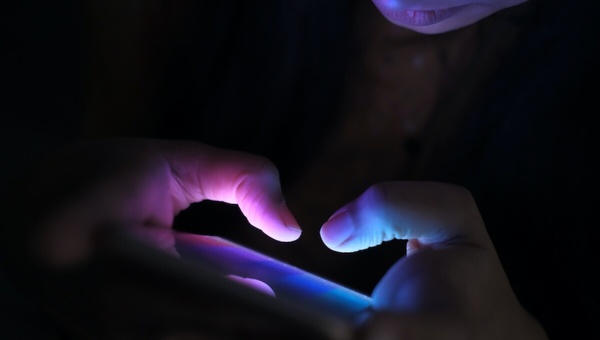The Effects of Blue Light on Sleep and Eye Health

In our modern digital age, we are surrounded by screens—smartphones, tablets, computers, and televisions—that emit blue light. While blue light has its benefits, such as boosting alertness during the day, prolonged exposure to it, especially in the evenings, can have adverse effects on both our sleep quality and eye health. In this article, we will explore the intricate relationship between blue light, sleep disruption, and its impact on eye health, as well as provide actionable tips to mitigate its potential negative effects.
Understanding Blue Light
Blue light is a type of high-energy visible (HEV) light that is present in natural sunlight and emitted by digital screens, LED lighting, and fluorescent bulbs. While blue light exposure during the day can help regulate our circadian rhythm and boost our mood and alertness, excessive exposure, especially at night, can disrupt our sleep patterns and potentially contribute to eye strain and other eye health issues.
Effects of Blue Light on Sleep
- Circadian Rhythm Disruption: Exposure to blue light in the evening can suppress the production of melatonin, a hormone that regulates sleep-wake cycles. This disruption can lead to difficulty falling asleep and staying asleep, affecting overall sleep quality.
- Delayed Sleep Onset: The use of electronic devices before bedtime delays the body’s natural signal for sleep onset. This can lead to a phenomenon known as “sleep procrastination,” where bedtime is pushed later and later.
- Reduced REM Sleep: Blue light exposure can impact the amount and quality of REM (rapid eye movement) sleep, which is crucial for cognitive function, memory consolidation, and emotional regulation.
- Daytime Sleepiness: Poor sleep due to blue light exposure can result in daytime sleepiness, reduced alertness, and difficulties in concentration and productivity.
Read More : How to Manage Technology Use for Better Sleep Hygiene
Effects of Blue Light on Eye Health
- Digital Eye Strain: Staring at screens for extended periods can cause digital eye strain, also known as computer vision syndrome. Symptoms include dry eyes, blurred vision, headaches, and discomfort.
- Increased Risk of Macular Degeneration: Prolonged exposure to blue light is associated with an increased risk of age-related macular degeneration (AMD), a leading cause of vision loss and blindness among older adults.
- Disruption of Tear Production: Blue light exposure can lead to decreased blink rates and increased evaporation of tears, contributing to dry eye symptoms.
- Potential Disruption of Retinal Cells: Some studies suggest that prolonged exposure to high levels of blue light may cause oxidative stress in retinal cells, potentially contributing to retinal damage.
Mitigating the Effects of Blue Light
1. Limit Screen Time Before Bed:
– Digital Detox: Aim to reduce screen time, especially in the hours leading up to bedtime. Engage in activities that promote relaxation, such as reading a physical book, practicing mindfulness, or taking a warm bath.
2. Adjust Screen Settings:
– Night Mode: Many devices offer a “night mode” or “blue light filter” setting that reduces blue light emission in the evening. Activate this mode to minimize blue light exposure before sleep.
3. Use Blue Light Blocking Glasses:
– Eyewear Protection: Blue light-blocking glasses are designed to filter out a portion of blue light from screens. Wearing them in the evening can help mitigate the negative effects of blue light on sleep.
4. Optimize Sleep Environment:
– Dim Lighting: Use dim, warm-colored lighting in the evening to signal to your body that it’s time to wind down and prepare for sleep.
– Blackout Curtains: Install blackout curtains to minimize external light sources that could disrupt sleep.
5. Follow the 20-20-20 Rule:
– Eye Breaks: When using screens, follow the 20-20-20 rule: every 20 minutes, look at something 20 feet away for at least 20 seconds to reduce eye strain.
6. Blink Regularly:
– Conscious Blinking: Make a conscious effort to blink more often when using screens to prevent dry eyes.
7. Stay Hydrated:
– Eye Comfort: Drink plenty of water to maintain proper eye hydration and reduce the discomfort of dry eyes caused by screen use.
8. Regular Eye Exams:
– Eye Health Monitoring: Schedule regular eye exams to monitor your eye health and discuss any concerns with an eye care professional.
Read More : How to Manage Screen Time for Better Eye Health in Children
Conclusion
While blue light is an integral part of our lives due to the prevalence of digital screens, it’s essential to be mindful of its potential effects on sleep quality and eye health. By implementing simple strategies such as limiting screen time before bedtime, adjusting screen settings, and using blue light-blocking glasses, you can minimize the negative impact of blue light on your sleep patterns and promote healthier eye habits. Prioritizing a balance between screen usage and time spent engaging in other activities can contribute to improved sleep, reduced digital eye strain, and long-term eye health. As technology continues to shape our lives, making informed choices about blue light exposure is an investment in your overall well-being.




